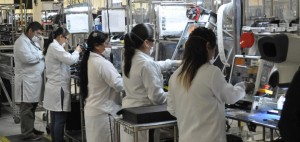By Wayne Jebian
CTLatinoNews.com
“Vamanos a Dios!” shouted a perspiring woman one Sunday morning at New Britain’s Iglesia Pentecostal Jehova Rafa “Mi Sanador”. Her voice mixed with the soaring prayers of her pastor, Dominga Mendez. “Gloria a Jesus!” shouted another woman in the sparse crowd of about ten, who watched and listened as Mendez brought her worshipers’ enthusiasm to a fever pitch.
Mendez, of New Britain, came to the United States in 1971 from Puerto Rico and has been been Pentecostal all her life. Her congregation is just one of the many churches gaining a foothold in communities throughout the state. As more of these churches surface and grow, religious culture for Latinos continues to shift.
The trend shies away from the perception of the Latino community as predominantly Catholic. According to the Pew Hispanic Center, although 62 percent of Latinos identify as Catholic, one in five say they are Protestant. Seats occupied by Latinos in some Catholic churches are now empty as a result of the movement.
As previously reported by CTLatinoNews.com, Latinos have been leaving the Catholic Church, while their fastest-growing religious identification, other than “no affiliation”, has been Protestant and Pentecostal. As the number of evangélicos increase, they are poised to potentially be courted by the GOP due to their similar social beliefs.
Each week, the storefront is not the only evangelical church filled with impassioned sermons and fervent responses in the area. Iglesia Pentecostal is one of two small Latino evangelical churches straddling the corner of North and Sexton Streets. The other small church, Iglesia De Jesucristo El Buen Samaritano, shares a castle-like building with a black evangelical congregation, and there are more Pentecostal storefront churches down the street.
Driving through New Britain or walking down Broad Street in Hartford, the frequency of these churches makes it evident that the Latino Evangelical movement, which made the cover of Time magazine earlier this month, is alive and thriving in Connecticut.
There is a rehabilitated industrial building in Hartford, at 1841 Broad Street, that houses half a dozen separate Latino evangelical congregations and some non-Latino churches as well. Like those congregations that now share traditional church buildings with other sects, the Broad Street Evangelical complex shows that Latino churches get along well with their neighbors.
Their assimilation may help explain how evangélicos have flown under the radar for so long. They self-identify as Christian, rather than Pentecostal, Assembly of God, Evangelical or other titles, which at times leads them to be mistakenly identified as Catholics. That, and their congregations are typically small, normally with 30 or even fewer members.
Incidentally, evangélicos do not rate any percentage points at all on breakdowns of religious affiliation in Connecticut.
However, the figures, or lack thereof, do not appear to accurately reflect Latinos and their religious beliefs. According to some leaders in the evangelical community, they could be the second largest religious category in Connecticut’s cities and may someday soon be the second largest statewide.
Worldwide, evangelism is becoming more and more prominent.
“In Latin America, there is an explosion of evangelical churches,” said Reverend Abraham Hernandez, Associate Pastor at Grace Fellowship Church in Branford. He also works at WADS, a Spanish evangelical radio station covering Southern Connecticut.
Hernandez believes some Catholic Latinos are leaving to convert. “According to trends and recent research from Pew and other organizations, there is a considerable amount of folks that are coming over from Catholicism,” he said.
Tamara Reyes, a former Catholic who is now the secretary at Iglesia De Dios, one of the churches in the Broad Street complex, said her congregation has seen some Catholic converts as well.
When asked whether the current growth was coming at the expense of the Catholic population, she said…
Finish reading Evangélicos Thriving in Connecticut





